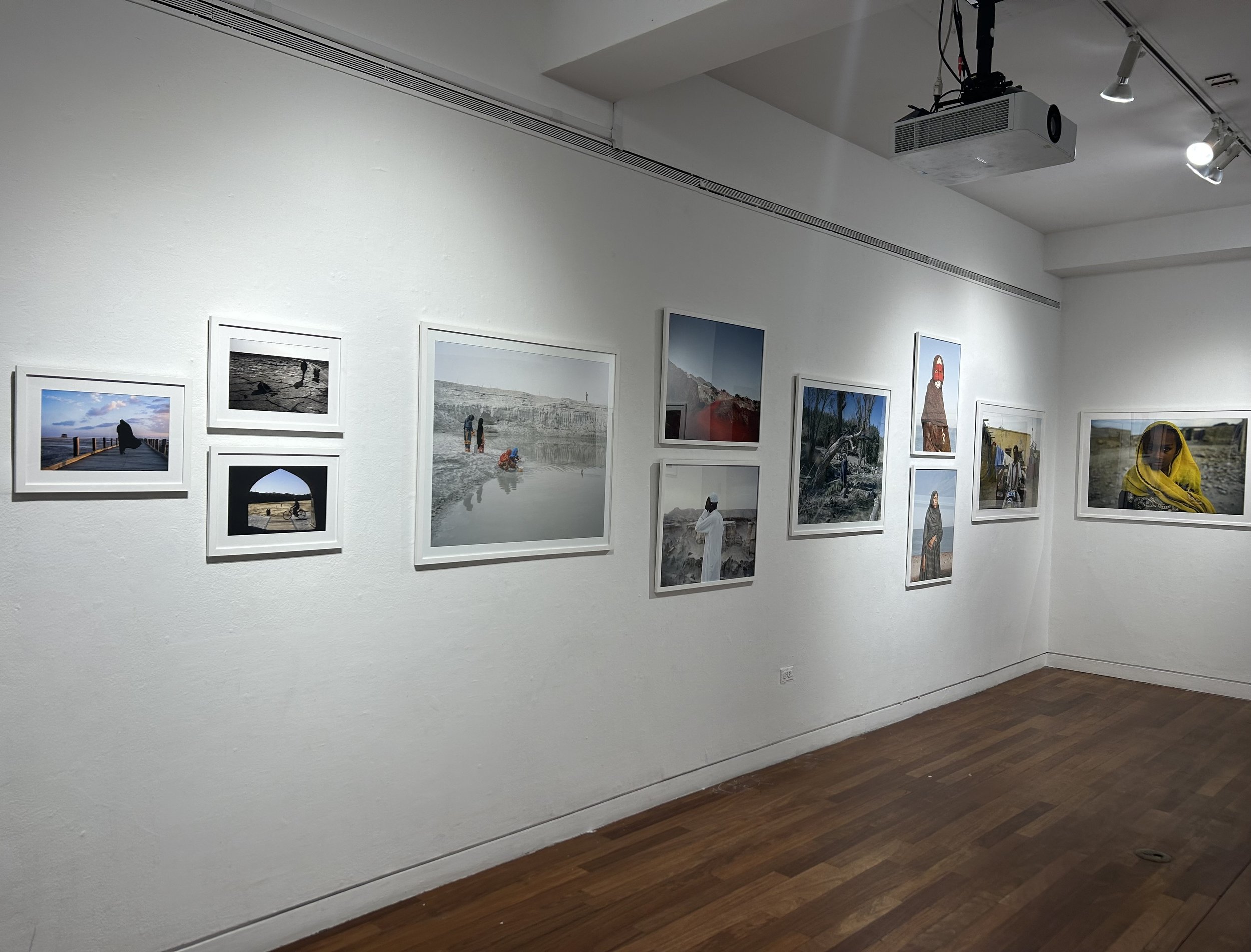Water and Oil
Environmentalism and Women’s Rights in Iran
Photographs by Hoda Afshar, Ako Salemi, Hashem Shakeri, Tahmineh Monzavi, Rahi Rezvani
Curated by Angelica Modabber, IRCPL Fellow
On view February 2 - March 8, 2024
Exhibition Reception: February 6 , 6:15 -7:15 pm
The notion of Vatan (homeland), in Farsi, is a geo-body separate from one’s original birthplace that is as tied to the science of geography and mapping as it is to the notion of a female beloved or a mother.[1] This exhibit explores the intertwining of gender and geography in Iran in the wake of the increasing droughts and climate crises impacting the Middle East.
This show features the photographers Hoda Afshar, Hashem Shakeri, Ako Salemi, Rahi Rezvani, and Tahmineh Monzavi to depict the intertwining of gender and geography in Iran, through their representations of regions with geological treasure troves, like Hormuz Island, and other areas which instead are marked by the widespread desertification of water bodies, such as in the provinces of Sistan and Baluchistan. Salemi and Shakeri focus on the desiccation of Lake Urmia, once one of the largest saline lakes in the world, and the impact of the desertification of the Hamoun Wetlands on local communities and farmers, respectively.
Rezvani, instead, photographs the famous French Iranian actress, Golshifteh Farahani, a few days after Mahsa Amini’s death provoked mass protests against the mandatory hijab; here he depicts the actress covered in black paint, visually doubling as blood and oil, thereby demonstrating the intersection of gender equality and environmentalism. Monzavi and Afshar, instead, photograph the communities in the south of Iran, in the Baluchistan province and Hormuz Island respectively, with a particular focus on the representation of diasporic African Iranians who came to Iran as sailors and merchants or who were brought during the Arabic slave trade. The focus on the hijab in these portraits mark ethnic and religious differences among the inhabitants, sometimes indicating if they are married or unmarried. These communities have retained some of their African traditions, often collectively reciting poetry in Swahili, Arabic, or Farsi, and participating ceremonies in which they interact with nature. The winds, according to these customs, take possession of human bodies, and need to be lured out with chants uttered in various languages. The exit of the winds, their contagion, their ability to usurp the human body, and their seemingly supernatural power in carving out the surreal stone landscape of Hormuz, point to an alternate approach to nature, one in which the natural world interpenetrates with the human, upending the supposed binary between culture and nature.
A special thanks goes to Justine Esta Ellis and the Institute of Religion, Culture, and Public Life for making this exhibit possible, and the Silver Eye Lab for providing and shipping the printed photographs.
[1] Najmabadi, Afsaneh. "The erotic Vaṭan [homeland] as beloved and mother: To love, to possess, and to protect." Comparative studies in society and history 39, no. 3 (1997): 442-467.
For further information, please contact the gallery at neimancenter@columbia.edu.
For more information, please feel free to email us or call 212-854-7641.





